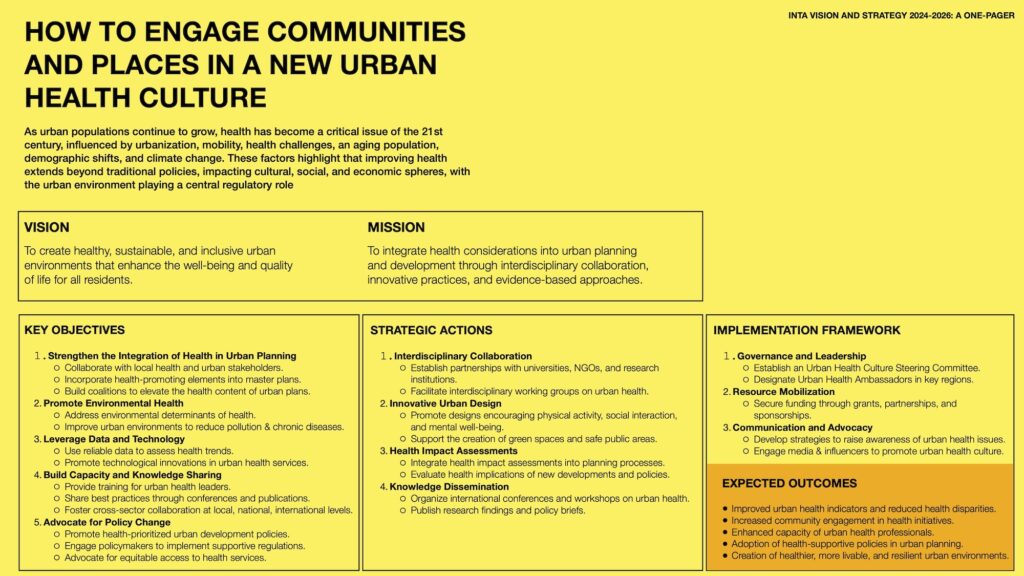HOW TO ENGAGE COMMUNITIES AND PLACES IN A NEW URBAN HEALTH CULTURE
In an era where more than half of the world’s population resides in urban areas, and with urban populations steadily increasing, health has emerged as a pivotal urban issue of the 21st century. This challenge is compounded by major societal agendas: Growing Urbanization, Mobility, Health challenges, the aging population and shifting demographic patterns, and finally the need to adapt to climate change. These developments indicate that the levers for improving health and well-being extend beyond traditional health policies. They have profound cultural, social, and economic implications, with the urban environment serving as a key integrator and regulator.
INTA’S Mission
Aims to enhance the integration of urban planning and health through collaboration with local health and urban stakeholders. By providing professional planning and community development services to both the private and public sectors, INTA seeks through this strategy to reshape how planners, developers, and urban professionals consider and incorporate public health considerations into their projects.
Transforming the built environment through innovative design can significantly impact individual and community health, often more so than conventional health policies. Recognizing the role of environmental determinants in health underscores the centrality of urban development in improving urban health outcomes. Continuous efforts are required to foster collaboration with planning authorities, ensuring that health-promoting elements are integrated into master planning. Additionally, building coalitions of health advocates can elevate the health content of urban plans, while also bringing urban considerations into health-related decision-making, such as the siting of health facilities. A network of organizations and individuals committed to planning healthy communities can make a substantial difference.
The Role of Data
Data plays a crucial role in promoting healthy urban environments. Understanding the health status and behaviors of the population is essential for planners. Reliable and credible data sources are necessary to assess health status, identify trends, and devise preventive measures and interventions.
As cities continue to expand and are influenced by demographic shifts, market dynamics, technological advancements, and an era of mass information platforms, the challenges we face are unprecedented. Healthy Cities planning may be the strategy that helps us preserve and enhance the core of our humanity in this rapidly evolving urban landscape
Why Urban Health culture?
As cities worldwide adapt to rapid urbanization, INTA and its partners address the global socio-demographic transition and climate changes, along with their consequences on urban development.
Since 1974, the International Urban Development Association (INTA) has been a global not-for-profit organization dedicated to the betterment of cities by addressing the broad determinants of urban well-being. INTA understands that the health challenges and opportunities in urban environments are complex issues requiring interdisciplinary collaboration among researchers, educators, policymakers, practitioners, community leaders, and urban health advocates across sectors such as urban planning, architecture, transportation, housing, and environmental health.
